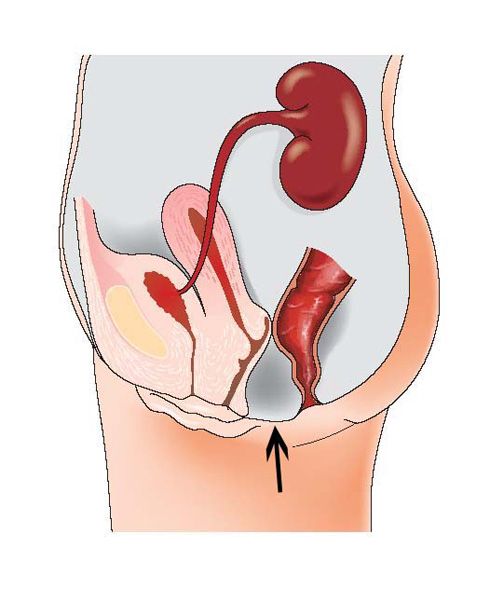Perineoplasty - repair and strengthen the perineum
What is perineoplasty ?
 Perineoplasty is a surgical procedure to repair and strengthen the perineum, which is the muscular area between the vagina and the anus in women. The perineum can be weakened or damaged due to factors such as childbirth, aging or certain health conditions.
Perineoplasty is a surgical procedure to repair and strengthen the perineum, which is the muscular area between the vagina and the anus in women. The perineum can be weakened or damaged due to factors such as childbirth, aging or certain health conditions.
Perineoplasty is usually performed to treat problems such as sagging perineum, urinary or fecal incontinence, or decreased sexual satisfaction. The procedure consists of tightening the muscles of the perineum and repairing weakened or torn tissues.
Who is the surgery for ?
Perineoplasty is mainly for women who have had a difficult vaginal birth or who have problems with genital prolapse. It can also be offered to women who have pain during sexual penetration or mild to moderate urinary incontinence related to a weakening of the muscles of the perineum. In general, perineoplasty is considered when other non-invasive treatments, such as perineal rehabilitation exercises, do not work or are not effective enough.
What are the causes of genital prolapse ?
The main causes of genital prolapse in women are multiple pregnancies, difficult childbirth, natural aging, menopause, overweight, chronic constipation, chronic cough and certain connective tissue disorders. These factors can weaken the muscles and tissues of the pelvic floor, which can cause pelvic organs, such as the uterus, bladder, and rectum, to descend into the vagina.
Are there non-surgical alternatives to treat perineum problems ?
There are non-surgical alternatives for treating perineum problems. Here are a few :
Perineal rehabilitation: these are targeted exercises to strengthen the muscles of the perineum and improve its elasticity. This method can help maintain or regain a strong and toned pelvic floor.
Biofeedback: This technique uses sensors to measure the electrical activity of the pelvic floor muscles during exercise. The patient can thus visualize the activity of his muscles, which can help him contract and relax them better.
Electrostimulation: this technique consists of using an external electrical stimulator to activate the muscles of the pelvic floor. This can be helpful for women who have weak perineal muscles or find it difficult to control them.
How is a perineoplasty performed and what techniques are used ?
This intervention can include several surgical techniques depending on the individual needs of the patient.
Here are some of the techniques used during a perineoplasty:
The resection of part of the perineum to reduce the space between the muscles of the perineum. This strengthens the musculature of the perineum and better supports the internal organs.
The reconstruction and suturing of the muscles of the perineum to restore their integrity and functionality.
The use of tissue from other parts of the body (such as the buttocks or thighs) to strengthen muscles of the perineum.
The techniques used during a perineoplasty depend on many factors, including the patient's diagnosis, the severity of the pathology of the perineum and the objectives of the surgical procedure.
Does it affect sexuality or urinary functions ?
Perineoplasty can sometimes improve sexuality and urinary functions, especially if the latter have been affected by the condition of the perineum before the procedure. Indeed, perineoplasty strengthens the pelvic floor, which can improve sensations during sexual intercourse and help prevent urinary incontinence.
However, it is important to note that perineoplasty may have temporary effects on sexual and urinary function, such as pain during intercourse or temporary difficulty urinating. These effects are often temporary and usually disappear after a few weeks.
How long does it take to recover ?
Recovery time after perineoplasty depends on each person and the extent of the procedure. In general, most patients can return to their normal activities after about 4 to 6 weeks.
During the first weeks after surgery, it is recommended to avoid strenuous physical activities such as running, jumping and weight lifting. It's also important to follow your doctor's instructions about taking medications and wound care to avoid complications.
Over the weeks, you may be able to gradually increase your level of physical activity.
Y a-t-il des restrictions ou des précautions à prendre après ?
Yes, there are restrictions and precautions to take after perineoplasty to allow for optimal healing. Here are some of the most common recommendations:
Avoid strenuous physical activity or sexual intercourse for at least 4-6 weeks following surgery, or as directed from your surgeon.
Avoid heavy lifting for at least 6-8 weeks after the procedure.
Avoid taking baths or swimming for at least 4-6 weeks after surgery, or as directed from your surgeon.
Apply ice to the operated area for the first few days to reduce inflammation.
Avoid all activities that increase intra-abdominal pressure, such as coughing, sneezing or constipation, because this can increase the tension on the operated area.
What are the expected results ?
The results expected after a perineoplasty vary according to the needs and objectives of each patient. The main improvements expected following this intervention are as follows:
Reduction of pain and discomfort: Perineoplasty is often performed to correct a tear or distension of the pelvic floor, which which can lead to pain during intercourse or urination. After surgery, patients can expect significant relief from these pains.
Improved sexual function: The perineum is an important area for female and male sexuality. Perineoplasty can help strengthen the perineal muscles, which can improve sensitivity and sexual sensations.
Restoring Self-Confidence: Health issues regarding the pelvic floor can affect self-confidence and quality life of patients. Perineoplasty can help restore that confidence and allow patients to participate in their daily activities without discomfort or pain.